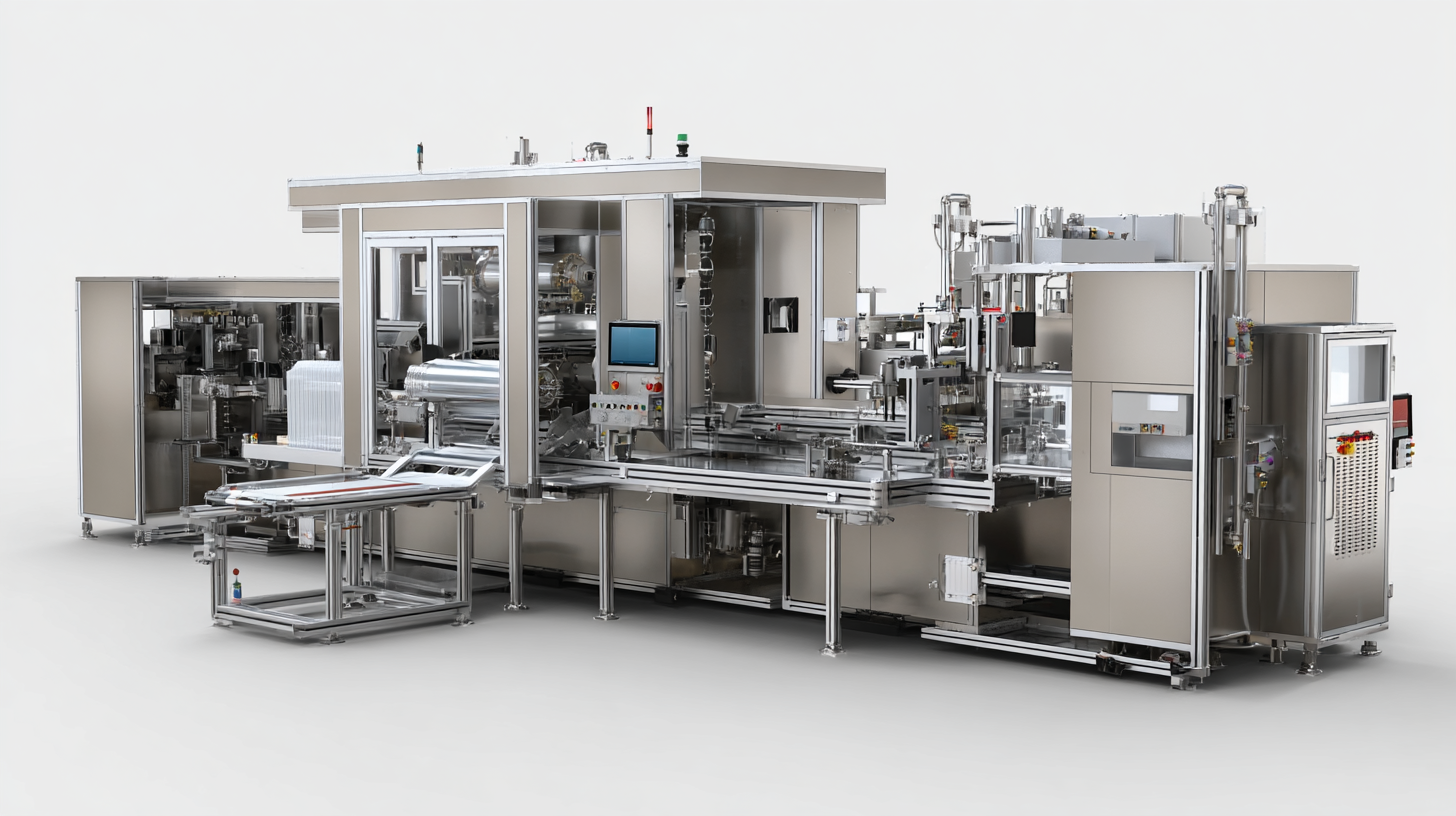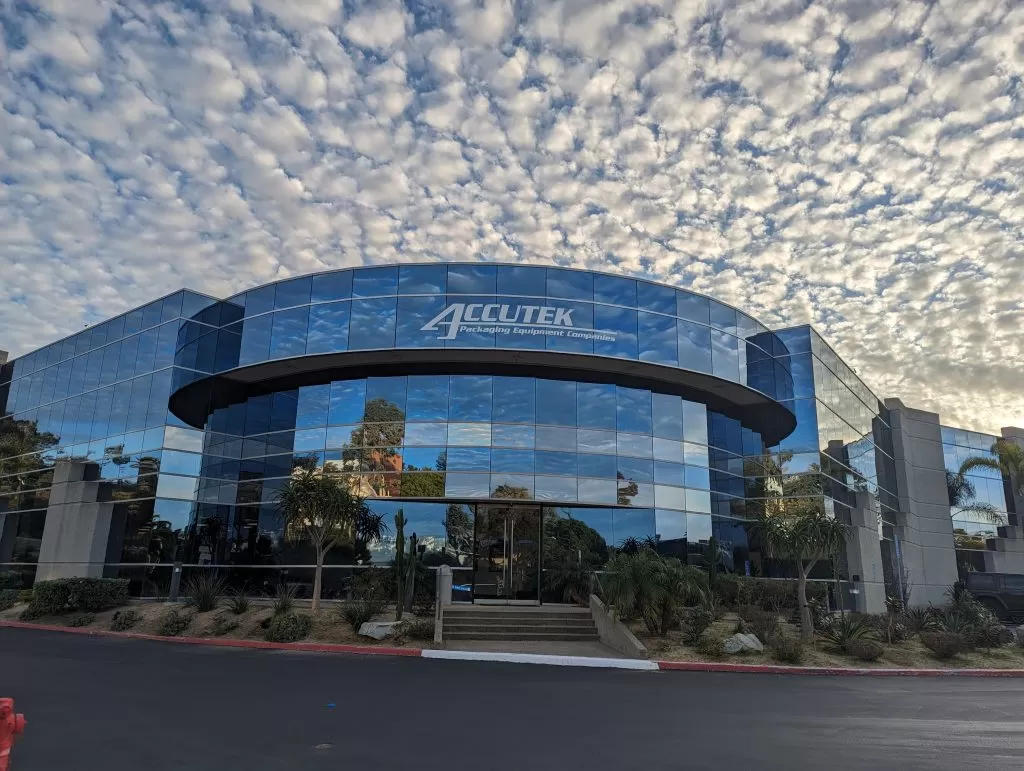In the ever-evolving landscape of food packaging, choosing the right sealing machine for food packaging is crucial for ensuring product quality and extending shelf life. According to a recent report by Grand View Research, the global food packaging market is projected to reach USD 1.1 trillion by 2025, with a significant technological shift towards automation and efficiency. As preferences shift towards sustainability and convenience, the demand for advanced sealing machines is on the rise, enabling manufacturers to meet consumers' needs while reducing waste. Furthermore, studies indicate that modern sealing technologies can reduce product spoilage rates by up to 30%, highlighting their importance in the supply chain. This blog aims to explore the latest trends and benefits associated with various sealing machines, ensuring that you make an informed choice for your food packaging needs.

 When it comes to food packaging, selecting the right sealing machine is crucial for maintaining freshness and extending shelf life. There are various types of sealing machines available, each tailored for specific packaging needs. The most common types include vacuum sealers, impulse sealers, and chamber sealers. Vacuum sealers remove air from bags, which is ideal for preserving perishable items. Impulse sealers are perfect for quick, single-use applications, while chamber sealers are designed for bulk packaging, providing a robust seal in a controlled environment.
When it comes to food packaging, selecting the right sealing machine is crucial for maintaining freshness and extending shelf life. There are various types of sealing machines available, each tailored for specific packaging needs. The most common types include vacuum sealers, impulse sealers, and chamber sealers. Vacuum sealers remove air from bags, which is ideal for preserving perishable items. Impulse sealers are perfect for quick, single-use applications, while chamber sealers are designed for bulk packaging, providing a robust seal in a controlled environment.
Tip: Before making a purchase, assess your production volume. If you handle large quantities of food items, a chamber sealer might be your best option for efficiency and consistency. Conversely, if you only need to package small batches, an impulse sealer could suffice.
Another key factor is the type of materials you will be using. Different sealing machines work better with specific packaging materials. For instance, vacuum sealers are generally better with plastic pouches designed to handle the heat generated during the sealing process. Ensure your machine is compatible with your chosen materials to avoid issues with sealing integrity.
Tip: Don’t forget to consider ease of use and maintenance. Machines with user-friendly controls and easy-to-clean surfaces will save you time and effort, allowing you to focus more on your food products rather than the packaging process.
When selecting a sealing machine for food packaging, several key features must be considered to ensure efficiency and product safety. One crucial aspect is the sealing technology employed—continuous heat sealing, impulse sealing, or vacuum sealing are typical options. According to a report by The Freedonia Group, the demand for heat sealing machinery is projected to grow by 3.5% annually, signaling a shift towards advanced sealing solutions that maintain product integrity and enhance shelf life.
Another important feature is the machine's compatibility with various packaging materials. The flexibility to handle diverse substrates—such as polyethylene, polypropylene, and laminates—allows businesses to cater to a wider range of products. Research from MarketsandMarkets indicates that the global food packaging market is expected to reach $500 billion by 2025, further emphasizing the need for machines that can adapt to evolving packaging materials and techniques. Additionally, user-friendliness and maintenance requirements should not be overlooked, as these factors can significantly affect operational efficiency and cost-effectiveness in food packaging production lines.
This chart displays the key features to consider when choosing a sealing machine for food packaging, comparing different sealing methods based on their efficiency, cost, and ease of use.
When it comes to selecting a sealing machine for food packaging, evaluating potential suppliers for quality assurance is crucial. A reliable supplier should demonstrate adherence to industry standards and certifications that ensure the safety and integrity of food products. It's essential to verify their manufacturing processes, materials used, and technological capabilities. Look for suppliers that prioritize quality control throughout their production line, as this will directly impact the performance and durability of the sealing machines.
Sustainability is also a key consideration in the supplier evaluation process. Many companies are increasingly aware of their environmental impact and are seeking out suppliers who share this commitment. Assessing a supplier's sustainability practices can reveal their dedication to eco-friendly materials and methods. This not only enhances your brand's reputation but also aligns with growing consumer demand for responsible packaging solutions. By focusing on these aspects, businesses can choose sealing machine suppliers that not only meet their quality requirements but also contribute positively to the environment.
| Feature | Description | Quality Assurance Criteria | Supplier Evaluation |
|---|---|---|---|
| Type of Sealing Machine | Impulse, Vacuum, or Continuous | Certifications, Material Durability | Years in Business, Customer Reviews |
| Production Capacity | Units per hour | Performance Tests, Reliability Metrics | Product Samples, Case Studies |
| Machine Dimensions | Height, Width, Depth | Space Requirements, Ergonomics | Site Visits, Installation Support |
| Energy Efficiency | Power consumption ratings | Energy Star Certification, Cost Savings | Energy Audits, Comparative Analysis |
| Warranty and Support | Duration and Coverage | Service Level Agreements, Response Times | Post-purchase support, Maintenance Plans |
When negotiating with sealing machine suppliers, understanding market trends and pricing dynamics is crucial. According to a recent report by Market Research Future, the global food packaging equipment market is projected to reach USD 44 billion by 2025, with a compound annual growth rate (CAGR) of 4.2%. This growth reflects increasing consumer demand for convenience foods, which drives the need for efficient sealing solutions. Knowledge of these statistics can empower buyers to negotiate more effectively, ensuring they secure the best deals based on market realities.
Furthermore, establishing a strong relationship with suppliers can significantly enhance your negotiating power. Research indicates that long-term partnerships can lead to cost reductions of up to 15% due to bulk purchasing and streamlined operations. When approaching a negotiation, presenting historical purchase data and highlighting your business's growth potential can incentivize suppliers to offer better terms. Being informed about the supplier’s production capacity and lead times also aids in fostering a collaborative dialogue, resulting in a win-win situation that benefits both parties involved.

Maintaining and servicing your sealing machine is crucial for ensuring its longevity and optimal performance in food packaging. Regular maintenance not only prevents unexpected breakdowns but also enhances the efficiency of the machine. Start with routine cleaning to remove any residue or debris. A clean sealing surface ensures a proper seal, which is vital for preserving food quality. Additionally, inspect the heating elements and seals periodically for wear and tear, as these components are critical in maintaining the reliability of your sealing processes.
Another key aspect of service is routine calibration. Over time, the settings may drift, leading to inconsistent sealing results. Check the machine's settings against the manufacturer’s specifications to ensure accurate performance. Additionally, make note of any unusual sounds or performance issues and address them promptly to avoid more significant problems later. Keeping a maintenance log can also help track service intervals and alert you to upcoming needs, ensuring your sealing machine remains in excellent condition for years to come.
Accutek Packaging Equipment Companies, Inc. stands as one of the premier privately owned packaging machinery manufacturers in the United States.

Sign up for all the news about our latest arrivals